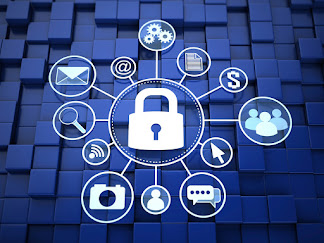FEW SECURITY THREATS START FROM EMAILS
Email is a widely used means of communicating. It is a service that is part of the daily life of many users and companies. However, it also has certain problems that can compromise security and privacy. Most security threats arrive via simple email. For this reason, in this article we have wanted to review some security tips and recommendations to avoid compromising our devices and our privacy through email.
Most security threats arrive by emailCybercriminals set their sights on what is hosted by many
users. An example is email, to which we must also add the wide range of
possibilities it offers. By this we mean, for example, sending attachments.
Also insert links, images, etc.
Through an email, hackers could put the security of our
computers at risk. This is something that affects private users but also
companies. Precisely the latter, the security risks for companies, is something
that has increased notably in recent times due to the lack of measures to avoid
risks through e-mail.
An example of attacks through email is Phishing.
Cybercriminals seek to trick the victim into logging in or entering personal
data on a site that pretends to be legitimate but is actually a scam.
We can also run into the sending of dangerous attachments and
that when downloading or executing them can deploy their threats. Even QR
images that when opened redirect us to pages that have been maliciously
configured.
We are not wrong if we say that the vast majority of Internet
users have received some dangerous mail at some point. Either a Phishing
attempt or the sending of a fraudulent file. The same is true when we refer to
companies. Therefore, we must take into account some tips that we are going to
mention.
Tips to improve our security when using e-mail
The most
important thing is to have common sense: Without a doubt, it is the best
protection to avoid Phishing attacks. We must always avoid accessing pages or
platforms through links that we receive by email. We do not know if it could
really be a scam attempt, so the ideal is to always enter from the official
page through the browser.
Nor should we reply to Spam emails or any message that asks
for data. Sometimes they can ask us for information to solve a problem, for
example. Simply by responding to an email of that type we are already putting
our security at risk. Sometimes they want us to reply to a message to verify
that there is an active user behind that account.
Of course you have to pay close attention to the attachments.
It does not matter if you have sent us a contact that we trust that email,
since that person could have been previously infected.
You always have to have total security
programs and tools and have your equipment up to date. On the one hand,
security software can prevent the entry of malware and block malicious files
downloaded via email. On the other hand, keeping systems up-to-date can prevent
cybercriminals from exploiting existing vulnerabilities. Patches and updates
can correct these problems.
We must not forget the security of our accounts. You must have
a password that is strong and complex, have two-factor authentication enabled
whenever possible, and be careful when logging into other computers.




Comments
Post a Comment